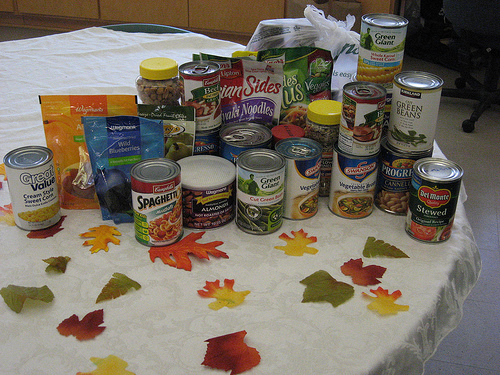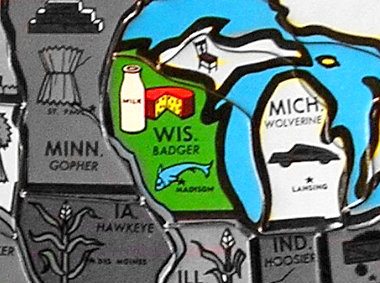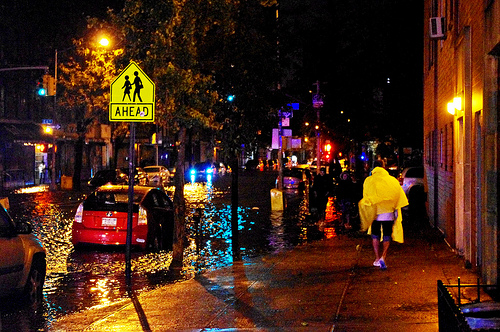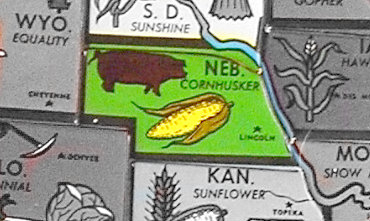Shelties and the White House
The presidential election in the United States is just a few days away, and like the general population, dog lovers hold varying political views and opinions. Most will agree that it’s fun to have a dog-loving President in office, and Presidents certainly can help popularize otherwise obscure breeds. Sheltie lovers may be interested in learning that it was a President, President Calvin Coolidge, who helped popularized Shetland sheepdogs in the U.S., according to an article on the Psychology Today website.
President Coolidge had been an ardent dog lover, and he and his wife had an all-white Rough collie. When this collie died, two children from Michigan gave an all-white female Sheltie to the President as a replacement.
The Shetland sheepdog, who seems to have been a bit of a tomboy, was noted for getting dirty, and so she became nicknamed Calamity Jane. Calamity Jane sparked the public’s desire to own one of these beautiful dogs, though the traditional Shetland sheepdog sable color was more well-known.
Since the Coolidge presidency, it seems Shetland sheepdogs have remained a fairly popular breed. Their smaller size makes them easy to keep in smaller homes compared to Rough collies. Usually trainable and intelligent, they can be easy pets to live with, though some potential owners are put off by the thought of grooming those magnificent coats.
It caught my attention that the First Sheltie, Calamity Jane, was all-white. All-white Shelties, although beautiful, are discouraged by the AKC because of genetic concerns, and they are rarities these days.
Had any of you heard about the First Sheltie, Calamity Jane? If so, please share how you learned.
What about New York's rats?
I know what you're wondering: in the wake of the destruction caused by Hurricane Sandy, what about the rats? Images of flooded subway tunnels speak volumes about the human and financial impact. But those tunnels are not just the lifeblood of the city's transportation; they are also home to hundreds of thousands of rats.
The Sims official magazine for iPad
I was intrigued to learn that the Sims team has an official magazine out for iPad. I figured it would probably just basically be a flimsy marketing brochure, but I gave it a shot anyway. And to my surprise, it genuinely is a whole entire, fairly awesome magazine.
Dried mango slices: surprisingly delicious!
As a rule, I am not a big fan of dried fruit. But I live in a rural area that is often susceptible to big weather issues that keep me trapped at home for days - sometimes weeks - at a time. And when I went gluten free a few months ago, I started to realize that most of the food I usually stockpile is gluten full. This has led me farther afield to experiment with shelf-stable, gluten free food stuffs that stockpile well.
Forget the canned goods - donate money!
Once you think about it for a minute, a canned food drive is silly. Charities can buy food in bulk, often at an extra discount because they are charities. How much do you think a food drive would pay per can of tuna fish when they buy it by the pallet, versus the price you pay at the store?
Senate Homestretch: Democratic Seats Hotly Contested
Wisconsin: The Badger State has been the site of some of the most-contested races of 2012. Gov. Scott Walker (R) fought off a highly charged recall campaign. President Obama and Mitt Romney are fiercely contesting the state, despite its Democratic tilt in prior presidential races. And, it is the site of one of the most closely contested U.S. Senate races.
Former Gov. Tommy Thompson (R), also a former Bush cabinet member, has a long history of political success in Wisconsin, but he’s been out of office for more than a decade, some of which he spent as a pricey lobbyist. Moreover, he’s 100 percent “establishment” in a party that’s grown more “grass roots” since his last attempt at office.
But all of Thompson’s disadvantages may be offset by the GOP enthusiasm and nuts-and-bolts organization that Walker has built with his policies and recall campaign, plus the boost from having native son Rep. Paul Ryan on Romney’s ticket.
That being said, the state still has a Democratic lean, built on a coalition of working class voters, student activists from Madison and peace- and good-government loving voters of Scandinavian descent in the outlaying parts of the state.
Rep. Tammy Baldwin (D) comes from the progressive Madison part of that coalition, but may have just enough appeal to the other elements to get past Thompson.
This race looks like it will depend on turnout, and how the few late-deciders break.
RealClearPolitics.com Average: Baldwin 47.3, Thompson 46.0
Virginia: Another “clash of titans” that is extremely close. Both former Gov. Tim Kaine (D) and former Sen. and Gov. George Allen (R) have been popular in the Old Dominion. Allen’s conservative approach typified the Virginia of the 1990s and early 2000s, while Kaine (and, moreso, Sen. Mark Warner, under whom he served as Lieutenant Governor) typifies the more recent, suburban-tilted moderate Virginia.
Democrats of that stripe won a series of major victories in the state (Warner elected Governor and Senator; Kaine elected Governor; retiring Sen. Jim Webb elected Senator), before Gov. Bob McDonnell (R) made a strong comeback for the GOP in 2009.
But while McDonnell and Romney made a solid play for the suburbs, and Romney appears poised to win the state, Allen’s old-school, Bush-era persona will probably run a few points behind.
But he may get enough fuel (so to speak) from opposition to Obama administration policies perceived as anti-coal, that is expected to boost GOP support in the southern and western parts of the state.
RealClearPolitics.com Average: Kaine 47.6, Allen 46.6
Rush Limbaugh opines on Hurricane Sandy
As you might expect, Rush Limbaugh could only stay silent for so long. On October 30, the day after the hurricane devastated New Jersey and New York, Rush took to the airwaves to indignantly declare that this freak superstorm was NOT - repeat, NOT - the result of global warming.
Senate Homestretch: Democratic Seats in Real Trouble
Nebraska: Sen. Ben Nelson (D) knew he couldn’t hold this seat after his vote in favor of the Affordable Care Act (Obamacare), and its accompanying deal for Medicaid funding for his state (the so-called “Cornhusker Kickback”), so he bailed, and, instead, former Sen. and Gov. Bob Kerrey (D) parachuted in after more than a decade living in New York.
Kerrey looked like a sure loser to fresh-face GOP nominee State Sen. Deb Fischer (R), but his team has managed to gain a bit of traction in the late-going.
Fischer remains relatively unknown and her play-it-safe campaign hasn’t done a great job of filling in the blanks, giving an opening for Kerrey to pummel her with ads focused on an otherwise-obscure land dispute with a neighboring family. If voters knew Fischer well, the ads would be meaningless, but with Fischer being kind of a mystery, they seem to be bringing some independent and soft-Republican votes back to the known-quantity Kerrey.
But even Kerrey’s best polls show him trailing, and Mitt Romney ought to have long coattails.
There is not enough polling for a RealClearPolitics.com Average, but Fischer has led in every poll, with only last week’s Omaha World-Herald poll showing a close race.
North Dakota: Former Attorney General Heidi Heitkamp (D) has made the North Dakota contest much closer than anticipated, and Rep. Rick Berg (R), like Fischer, hasn’t really maxed out on Republican potential in the state. But the polls all favor Berg, albeit slightly, and Romney will run well. It’s hard to see Heitkamp getting to 50 percent.
RealClearPolitics.com Average: Berg 49.0, Heitkamp 43.3
Montana: This battle of titans remains close, with Sen. Jon Tester (D), much more popular than his party in the state, trying to retain his seat against a strong challenge from Rep. Denny Rehberg (R).
Tester has relied on his personal appeal to overcome his association with Obamacare and other unpopular administration policies, but Rehberg has also been elected statewide (Montana only has one congressman), and ought to have some Romney coattails.
Tester may have closed what little gap Rehberg had opened, if you believe the polls, but Tester has only led in polls conducted by Public Policy Polling, which has a pro-Democratic reputation. Then again, most of Rehberg’s leads have been in polls by Rasmussen Reports, which has the opposite reputation.
But the center of gravity would seem to lean against Tester, since, even in his best polls, he’s well under 50 percent.
RealClearPolitics.com Average: Rehberg 46.3, Tester 46.0
Breaking up via a text message
I once knew a young couple. Their relationship seemed nice and stable. So it was a shock when she not only broke up with him, but broke up with him via a text message; that's right, a text message.
That is not a good way to end a romantic relationship, my friends; not ever. Not only are such stunts shallow and petty, it also is a free ticket to Drama City (which is hardly good for someone's emotional health I might add.)
Bored and want to split up? Sit down face to face and talk about it with your partner. I know such things are hard, but you'll thank yourself later. At the very least, you will have ended your romance politely and drama-free.
Unfortunately, a survey conducted in 2011 by a market research company named Lab42 revealed that 40 percent of people polled said they would use technology like sending a text to end a romance. Which raises the question: what if you do have a special someone who breaks up with you via a text message all the same? I rehearsed such a scenario a little while ago.
I grunted inwardly like I'd been shot as soon as I read on my phone her message of farewell to me. It hurt like heck, natch. But then I typed back my response:
I forgive you; but I can't have anything further to do with you, it said.
And that was it. No throwing myself at her feet, no begging, and no pleading; just those 12 simple words. Words which, in my opinion, are the best way to respond to a text message from your lover saying they're breaking up with you. Not only are those 12 words non-emotional, they let you break away clean and unsullied with emotional baggage or, worse, trauma.
Running around Yeak Loam Lake in Northern Cambodia
In the capital of the Ratanakiri Province of Cambodia, Banlung, any traveling runner should take the time to run to a volcanic lake known as Yeak Loam. The lake itself is thought to have developed over 700,000 years ago, and is a spiritual and holy place for local Cambodians.
To start out my run, I headed east from the main city down the highway. The lake itself is right over two miles from the city center, and to get there, I had to run down a dusty highway. Though not as chaotic as a major city, the highway portion of my run, with dodging bikes and cars heading the wrong way down the road, was not so much fun.
Once I headed off the main street, I hit the entrance to the lake. If you run during the day, you will be asked to pay the fee for foreigners to enter, but early morning or dusk runners can enter for free. From the gate, the entire run is on dirt. The lake itself is an impeccable bluish green and is surrounded by dense overgrowth. Locals dominant the main dock, with children and adults alike raucously jumping off the wooden structure wearing bright orange life jackets.
As I approached the lake, I headed counter clockwise on the dirt path around the lake. The path is around 2000m long, and is littered with small inclines and declines. In the first half of the circular track, I passed multiple docks, which with more distance from the main one, became less and less crowded. Attached to each dock were signs stating, “No Bathing,” or, “No Use Shampoo.” I giggled every few meters reading the English translations, but did fail to see anyone trying to bath in the lake.
After passing half way around the lake, the path, which was quite wide at the start, quickly turned into single track. Though the overgrowth was evident at the beginning, upkeep of this half of the trail must not exist. Massive trees engorged the path, and with the sun setting quickly, it became very hard to see the trail ahead of me. Small hills became more abundant, and at parts, the trail was quite difficult to run on. At one point near the end, the trail becomes split into two, and I was forced to walk over tree routes obstructing both sides.
Though the trail isn’t entirely perfect, and the road to the lake isn’t the most fun, Yeak Loam Lake is a great place to run. The loop around the lake is great for doing laps, and if you are looking to get in a work out, there are definitely worse places on earth. Make sure to bring a light if you come at night, because the trail does become dark. The sunset over the lake, though, is well worth the inconvenience.












